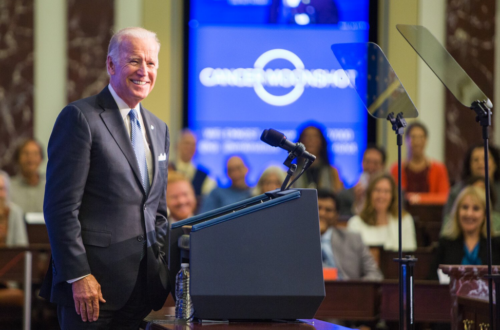On Feb. 21, we saw Mars in high definition for the first time ever. NASA’s Perseverance Mars rover has cameras that have given scientists — and the public — the ability to see Mars more clearly than ever before.
Space is a hot topic right now in Washington, D.C. Scientists have long thought that other planets could be a treasure trove of new information. The problem, however, is that most planets are prohibitively far away; a mission to Mars would require between 1,000 to 4,000 metric tons of fuel. Not only is all that fuel incredibly expensive, but it’s also heavy — about 15 times the weight of a blue whale.
In the early days of the space race, scientists considered using nuclear technology for space exploration. President Truman’s Atomic Energy Commission, a federal agency active in the 1950s and 60s, worked with NASA to develop a prototype for nuclear rockets. The program was canceled before any big discoveries could be made, and the potential for nuclear propulsion went unrealized.
That’s no longer the case. At the end of December, Congress allocated $1.5 billion for nuclear energy research and development. Of that, $110 million was dedicated to nuclear fuel development.
On Feb. 12, the National Academy of Science released a report commissioned by NASA on “Space Nuclear Propulsion for Human Mars Exploration.” The report, co-chaired by celebrated aerospace engineer Roger Myers, analyzed the feasibility of sending a human to Mars by 2039.
The two types of nuclear systems analyzed, thermal and electrical propulsion, were both found to have immense potential for a cost- and fuel-efficient method of space exploration. However, the report noted that an “aggressive research and development program” that would require a “significant…set of investments” from NASA is necessary for nuclear propulsion to be a viable option.
Nuclear energy has many benefits that have made it a favorite in the aerospace field. One of the biggest problems with space exploration is the duration of the voyages; nuclear energy, however, can be used for more powerful motors that can drastically shorten the voyage time. This shorter voyage, notes the National Academy, means the astronauts are less exposed to dangerous space radiation.
On Feb. 17, the American Nuclear Society released a report titled “The U.S. Nuclear R&D Imperative,” in which they assert that nuclear energy is imperative for the U.S. to be competitive in both the technology market and space exploration. The report, which focused on the economic side of nuclear policy, suggested granting government funding to private-sector research when certain milestones are met as a way to accelerate the innovation pipeline.
It’s long been known that innovation is good for the economy: in 1987, Robert Solow won a Nobel Prize in economics for his paper claiming 80% of the U.S. economy’s growth was a product of technological and scientific progress. Cooperation between the government and the private sector not only promotes domestic economic growth, but is also necessary to ensure competition with China in the science and technology international market.
Raising NASA’s budget has distinct implications for Florida. In the 2019 fiscal year, NASA was responsible for 33,093 Floridian jobs and an economic outcome of almost $6 billion. The space industry in Florida took a drastic downturn in 2011, after the Space Shuttle Program ended. The steady revival has been particularly due to private space companies that work in Florida.
For the launch of the Perseverance rover, NASA had to bring a nuclear power system to the Kennedy Space Center. The system, known as the Multi-Mission Radioisotope Thermoelectric Generator, will be used for many future missions, including the Dragonfly, a rover set to explore Saturn’s largest moon.
The existence of nuclear power infrastructure ensures the Kennedy Space Center remains at the forefront of rocket centers. Raising the fiscal budget for NASA’s nuclear programs will bring more jobs and resources to Florida’s Space Coast. Currently, NASA is responsible for $1.03 of every $10 earned on the Space Coast. If the space industry moves toward nuclear propulsion, the MMRTG is likely to make the Kennedy Space Center an increasingly valuable resource.
“If we decide to send humans to Mars,” Myers told NPR, “nuclear propulsion is very likely going to be central to that journey.” Nonetheless, the process to develop the technology is incredibly expensive, and it would require long-term congressional funding.
These reports have shown that the potential economic and scientific successes that could be achieved with nuclear innovation are immense, but they also come with a hefty price tag. Is nuclear energy the future of space? Only time — and budget appropriations — will tell.
Featured image: The first high-resolution image from NASA’s Perseverance Mars rover. Unmodified public domain image by NASA/JPL-Caltech.
Check out other recent articles from the Florida Political Review here.





